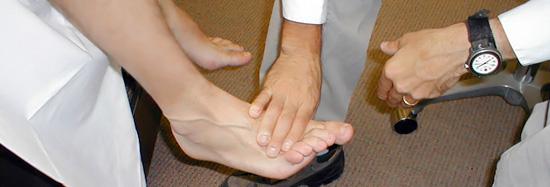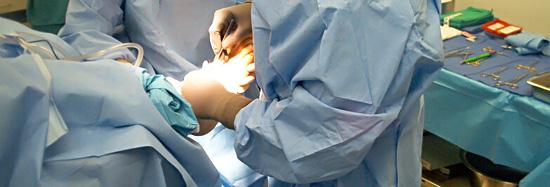
Dr. Robert C. Chelin, DPM, FAAFAS, DAAPM
Aesthetics in Podiatry
2189 Yonge Street, Suite 305
Toronto, Ontario M4S 2B2
416-921-5300
“Reduce pain, increase function and improve the foot’s appearance.”
Dr. Chelin is the Immediate Past-President of the Federation of International Podiatrists (FIP) as well as its Chairman of Economic Development and Website Committees. Chelin has been providing podiatric services to the residents of Ontario, Canada for over 29 years. His practice excels in offering state-of-the-art technology and services such as the use of Hyprocure sub-talar joint implant, Cutera Genesis Plus Laser, Hyaluronate (HA) volumetric fillers, and Extracorporeal Shockwave Therapy (ESWT). Most recently, his practice opened the “Designer Feet Boutique”. Here his team of licensed Estheticians use the latest sterile techniques and high quality foot care and nail products when performing their podiatric medi pedicures.
An article by Dr. Robert C. Chelin, DPM about bunion exams, bunion surgery and use of the Bunion Aid® splint
Eliminate Foot Pain, Increase Foot Function and Improve the Foot’s Appearance
The mission at our “Aesthetics in Podiatry” practice is to eliminate foot pain, increase foot function, and improve the foot’s appearance. A physical exam of my patient’s feet begins with a complete foot physical including an evaluation of their foot mechanics and the environmental factors that their feet are exposed to daily. What I mean by this, is to first evaluate whether their foot deformity is primarily a result of their genetics (extremely flexible foot structure), or primarily, from wearing ill-fitting shoes.
In this case, I will use a bunion deformity, also known as Hallux valgus as an example of a patient’s foot condition. A bunion deformity is an enlargement of bone on the side of the 1st metatarsal head which may also involve the deviation of the big toe. Primarily it is caused by genetic factors. In some cases, ill-fitting shoes can be the cause of a bunion, but in most cases, improper foot wear only exacerbates this genetic disposition.
With a bunion deformity, conservative treatments such as wearing prescription foot orthotics and/or Bunion Aid® bunion splints and switching to proper-fitting shoes can reduce bunion pain and stabilize one’s foot mechanics. If the bunion is painful, an x-ray examination is performed. If the deformity is severe and the degrees of bunion deviation of the big toe is large enough, I will suggest that the patient consider bunion surgery. I will then recommend a procedure or multiple procedures to eliminate the bunion pain, stabilize the deformity, and straighten the big toe for improved foot function and appearance.
Bunion surgery in most cases is successful; but in the end, it is up to my patients to continue with diligent foot care. For example, as part of my post-surgical care package, I include a Post Operative bunion splint that is engineered and manufactured in Germany, the Bunion Aid® Treatment Splint. I recommend that our patients begin wearing it daily after I remove the post-op dressings, usually 4 – 6 weeks after the surgery. This flexible hinged splint will maintain surgical correction while allowing the patient to return to normal activity.
I like to use analogies with my practice when consulting with patients. For example, with orthodontics, once our braces are removed from our teeth, we will continue to wear a retainer for some time to ensure our teeth do not shift back to their native position. It is only natural that with genetic deformities, whether they are deformities of our teeth or feet, our bones, ligaments and tendons want to go back to their native state. That is why it is so important to wear a bunion splint after bunion surgery and perhaps beyond. Post surgical use of the Bunion Aid® Treatment Splint will keep the big toe into the corrected position as well as maintaining the correct metatarsal angle. By doing so, we have a much better chance in preventing the reoccurrence of the bunion deformity.




